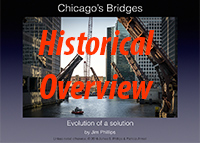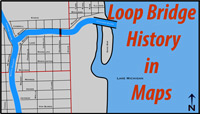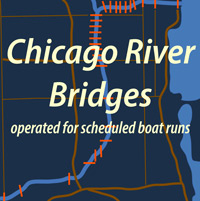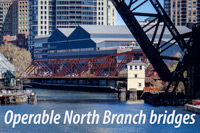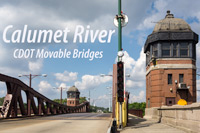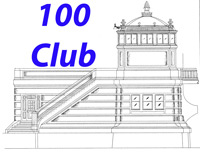Ewing Ave Bridge (92nd St.) - Calumet River
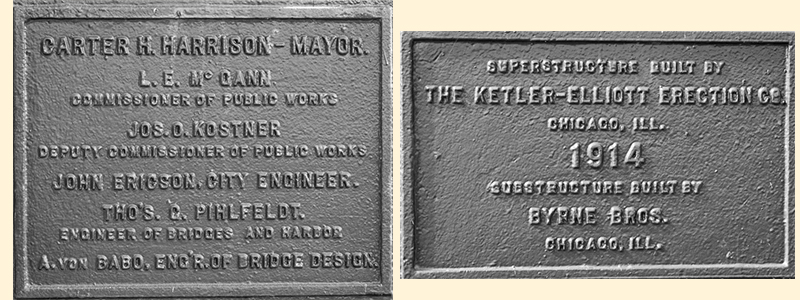
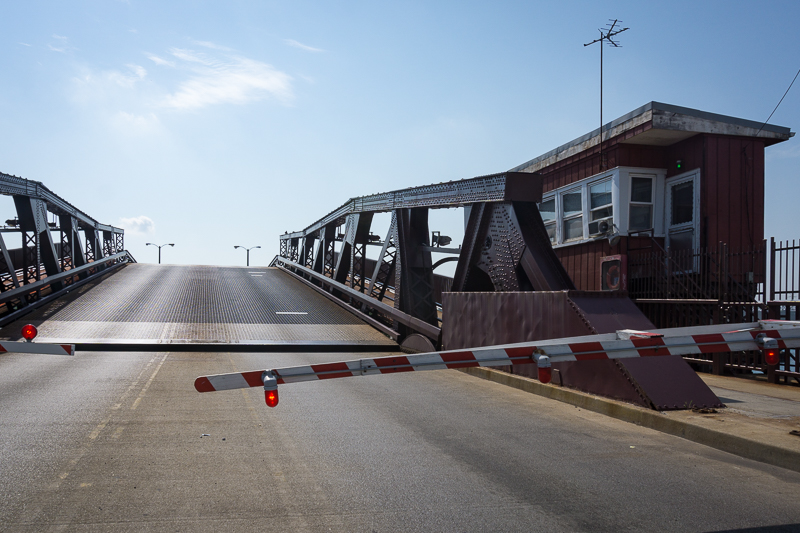
The first bridge built at Ewing Avenue (originally known as 92nd St.) was a hand operated swing bridge built in the 1890s. I was curious about the process of opening a swing bridge by hand and found a description for the bridge at Ewing Ave. from 1905.
The operator, William Mooney, manned the bridgehouse on the bank of the river. When a vessel whistled for a bridge opening, the operator rang the bell to warn land traffic of the impending opening, walked to the center of the bridge (about 125 ft.), inserted a sixteen foot lever into a rolling cog, and walked twenty laps around the circle to swing the bridge open (about 1000 ft. total). After the vessel cleared the bridge, twenty more laps to close and a return to the bridgehouse. That works out to a total of about 0.43 mile walked for a single opening.
The description went on to point out that there were approximately 1,870 “swings” in a month which works out to about 806 miles walked (imagine the fitbit step count). At that time a bridge operator was paid $1,500 annually or about $0.17 / mile.
In 1913, the year before the current bridge opened, another description of Mr. Mooney at work surfaced. It seems a crowd of 200 people were on the bridge enjoying the evening with a few drinks. These folks rode the bridge as it operated. Given the amount of effort it took to swing the bridge, the following call to the police was no surprise:
“I'm no truck horse and my bridge is no merry-go-round. I've been furnishing horse power for a gang of joy riders all night. Now I'm through. I want a squad of policemen to chase them away.”
As the bridge was cleared, Mooney added:
“Yes and don't none of you come back! Spend a nickel and take a ride on the street cars.”
The opening of the new Ewing Avenue bridge in 1914 marked the end of the hand operated bridge era at this location. The bridge opened to street cars on June 27th and automobile traffic followed on August 11th.
In 1911, a bond issue provided the funds for this bridge as well as a number of bridges downtown including those at Washington Blvd., Grand Ave., Chicago Ave.. Not surprisingly, a comparison of these bridges shows the similarities in the supporting pony trusses. These are all second generation Chicago-type bridges.
Additional information on this bridge can be found at Historicbridges.org.
Sources:
CPWD Annual Reports 1890-1938
“Bridgetender goes far: Takes 806 miles a month to hold job” July 24, 1905; ProQuest Historical Newspapers: Chicago Tribune
"Merry-go-round on bridge causes tender to protest"; Jun 7, 1913; ProQuest Historical Newspapers: Chicago Tribune
*****

